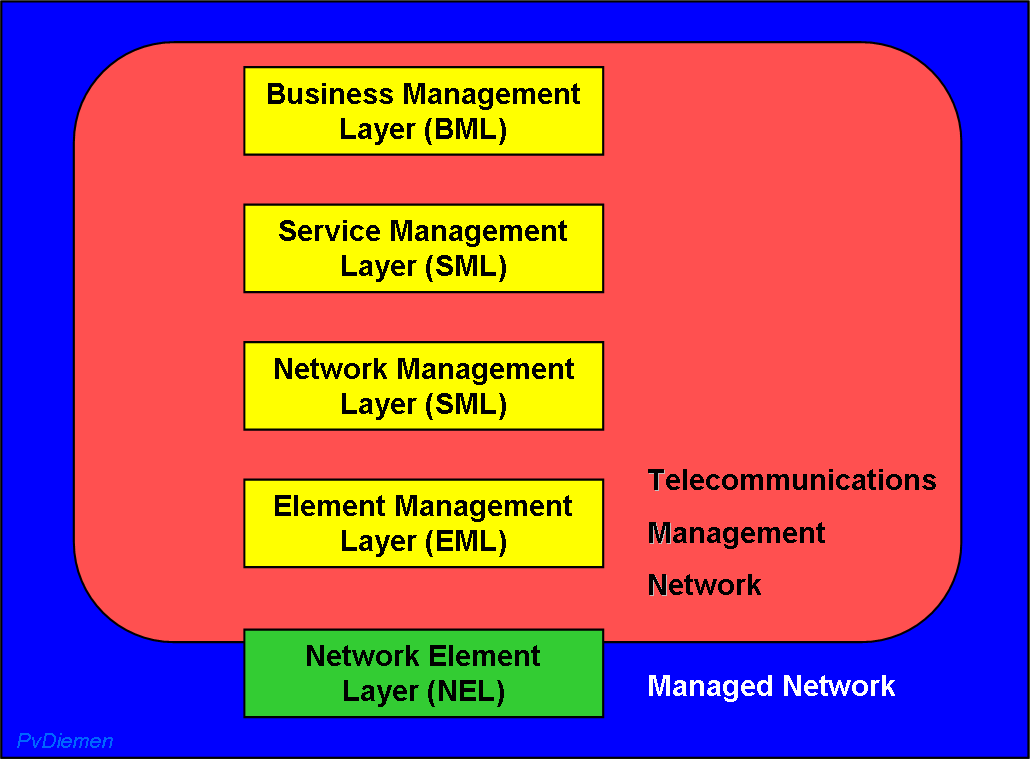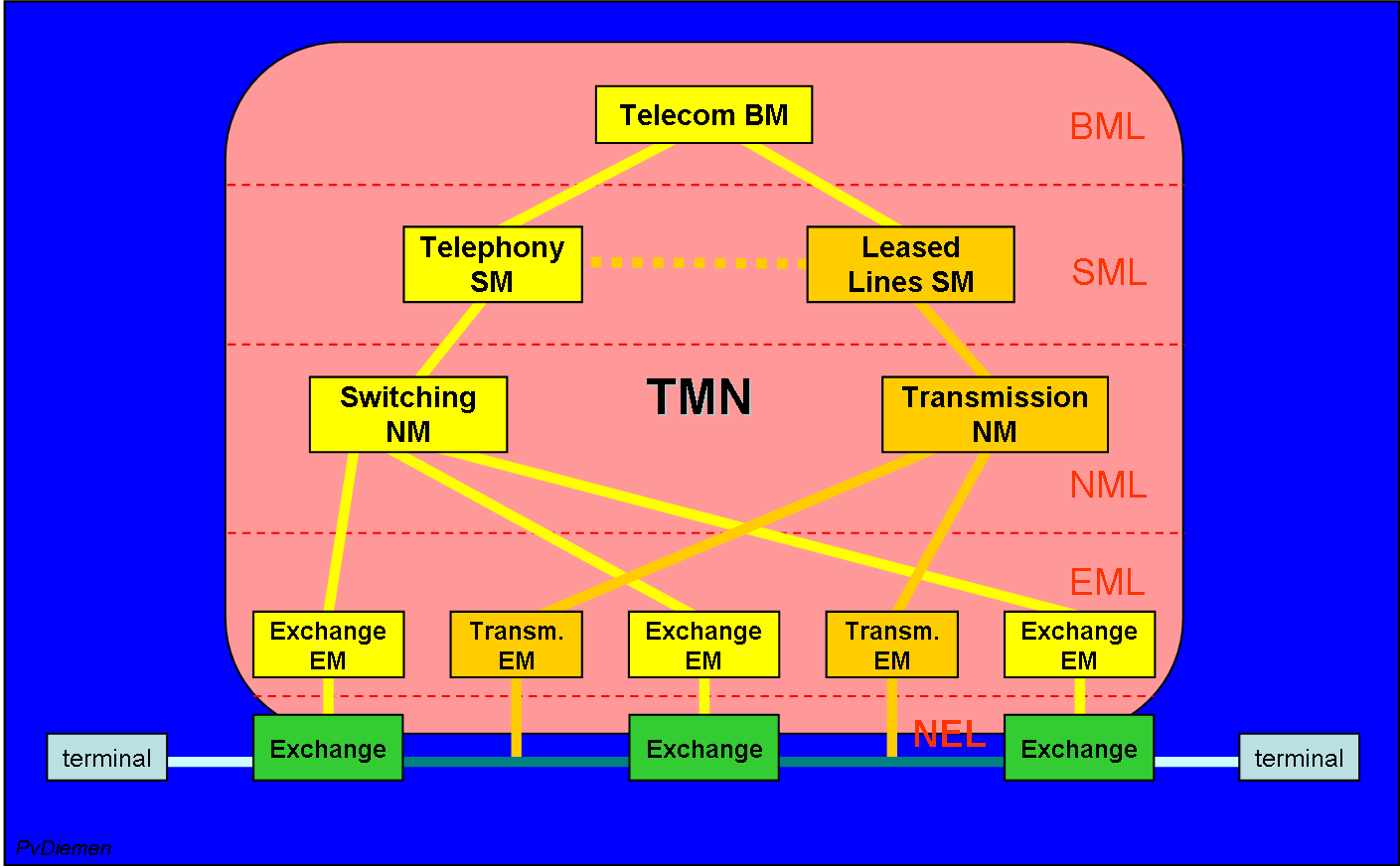Last update
PvD
2 LLA
Logical Layered Architecture
Recommendation M.3010 (92/10)
Overview
- Introduction
- Views: various ways to look at a network.
- NEL Network Element Layer
- EML Element Management Layer
- NML Network Management Layer
- SML Service Management Layer
- BML Business Management Layer
- Summary
and some issues:
- Information distribution
- Standards
Introduction
TMN assumes that the network consists of managed components called Network Elements (an exchange and a transmission segment are examples of such NEs). Management of these NEs can be viewed in a Logical Layered Architecture (LLA), also called the functional- or information hierarchy. It consists of:
- NEL
- Network Element Layer:
the functional components of an actual telecom network;
- EML
- Element Management Layer:
manage individual Network Elements;
- NML
- Network Management Layer:
manage the network (all Network Elements collectively);
- SML
- Service Management Layer:
manage the services offered by the network;
- BML
- Business Management Layer:
manage the whole enterprise.
To picture the Logical Layered Architecture [M.3010]:
Note:
- TMN reaches just into the network equipment: you need the hooks in the equipment to manage them.
- This is a functional hierarchy and not a physical hierarchy of management systems.
- There can be a hierarchy of management systems within a layer.
- It is allowed to bypass (management) layers for management operations.
The following is a (very) simple example of a telecommunications network with corresponding TMN system.
Note that:
- Transmission is not just cables; it includes multiplexors, line- and radio transmitters, repeaters, etc. Those need to be managed; they are Network Elements.
- Terminal Equipment is not managed in this TMN(/network). Subscriber lines are often not managed, but should when the operator is responsible for them.
- Exchanges and Transmission lines are totally distinct types in this example, and have therefore distinct network management systems. If network elements are of more comparable types, it can be a single management system (multi-element manager).
However, there is a necessary connection between the telephony management stack and the transmission management stack as the telephony service involves multiple exchanges connected through transmission lines (one may argue that the connection from the leased lines SM should go to the switching NM, but we're not going into that now; sufficient to say that the two management stacks need a connection).
- This is a small example. In large networks there could be regional Network Management systems and a national system. We will come back to interfaces between management systems later.
Views
'Views' provide an idea in what way a particular management layer is looking at the network, i.e. what components are discernable, and what their relationships are.
These views vary with the service the network provides, and with the (TMN) management level; that is, there are particular views for EML, NML, and SML (no views for BML). Each TMN level may have more view levels (amount of details versus overview). It should be possible to zoom-in from a higher level view to a more detailed view of a particular component, and zoom-out from a particular component showing its context.
Also, within a context (i.e. zoomed-in), it should be possible to pan (move sideways) to a connected component (when it is within the domain of responsibility) in stead of zooming-out first and then zooming-in again on the connected component.
At each TMN level, there are two types of views:
- physical:
- displaying actual equipment layout or geographical (topographic) maps with nodes and links;
- functional or logical:
- displaying functional components with their logical relations (topological, block diagrams).
It should be possible to crossover from physical view to functional view, and vice versa {the physical/logical-relation is also required for management purposes (system defence/fault management)}.
=O=


